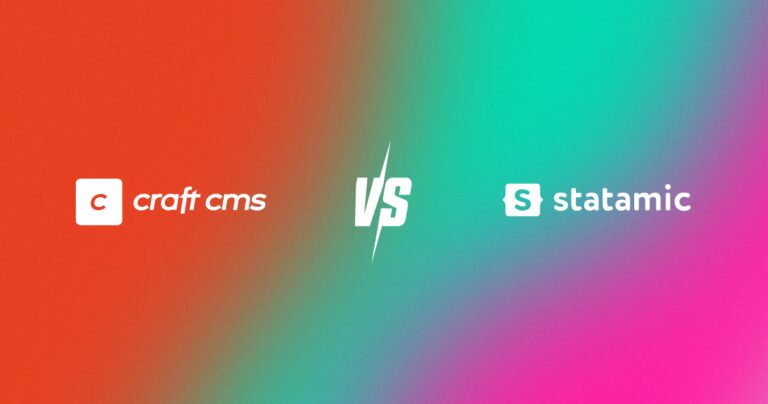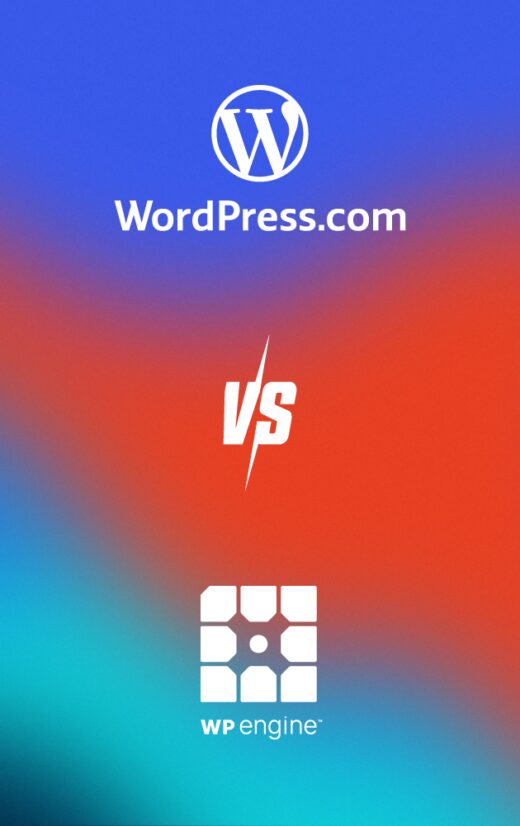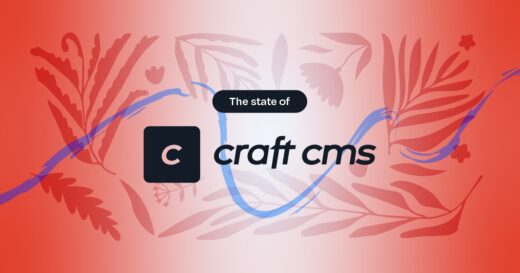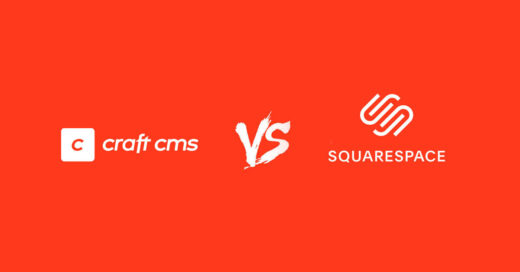Craft CMS vs Statamic
6 min read

Choosing the right content management system (CMS) can make or break a business’s online presence.
While established platforms like WordPress dominate the market, newer and more specialised CMS options like Craft CMS and Statamic are gaining traction for their ability to deliver bespoke, performance-driven websites. And with the recent controversy around WordPress and WP Engine, businesses are starting to look at their options beyond WordPress.
But with both platforms offering unique features tailored to developers and content managers, how do you decide which is right for your project?
While both are powerful, developer-friendly CMS platforms, we’ll explain why Craft CMS emerges as the better choice for businesses looking for scalability, flexibility, and long-term value.
Overview of Craft CMS
Why we love it
Craft is incredibly dynamic and allows us to build beautifully bespoke websites that perform, are optimised and developed to be scalable for our clients. The beauty of Craft is often in the backend, and at Abstrakt, we make it our responsibility to architect an interface that makes it super easy and user-friendly for content managers and website owners to create and manage content.
We pride ourselves on our page builders, which empower our clients to create pages without the intervention of developers.
Craft has an enthusiastic and growing community with more and more big brands taking on the platform, as well as it being a popular CMS for the world’s top agencies. Take a look at the State of Craft in 2024.
Crafts developers — Pixel & Tonic — are incredibly active, consistently updating the platform, making it more efficient, powerful and secure.
Why it might be less favoured
Craft is newer to the market and was established in 2013. It’s not as well known as giants like WordPress. It’s taking time for developers to move to Craft because it’s not as easy to develop for or pick up as everything is built from scratch— everything you need and nothing you won’t. That means it’s not as quick to turn around websites, but they’re much more performant.
Craft agencies tend to be a little more expensive because the websites are built from scratch and allow businesses so much more flexibility and control over their content. So, whilst expensive, you get much more for your buck.
Overview of Statamic
Why we’re talking about it
We’re a Craft CMS partner and agency through and through, but that doesn’t mean we’re not interested in emerging technologies. Whilst Statamic has been around since 2012 (a year earlier than Craft!) it’s taken a lot longer for its popularity to grow and we’ve only seen it begin to gain traction recently. What we like about Statamic is its similarities to Craft, offering a more bespoke experience and less out-of-the-box templates and sites you might find with WordPress or Squarespace.
Why it might be less favoured
Similar to Craft, building with Statamic means building bespoke and from the ground up so it’s more expensive than your standard out-of-the-box template. It’s also less known which tends to mean that clients err on the side of caution when it comes to newer platforms. It also has a smaller community of developers, and users and fewer plugins, which means that its scalability or support is smaller.
Key comparison factors
User experience and content management
Craft CMS: Craft is highly flexible and its Matrix feature allows for modular content management, making it ideal for content-heavy websites (think case studies, blogs, landing pages, service or product pages) and the backend authorship and interface can be tailored based on the structure of a site, content relationships and a client’s needs. Craft uses MySQL for database management, which means it’s more dynamic and has uncompromising scalability.
Statamic: Its flat-file database system, which is lightweight and easy to manage for non-technical users but less flexible for complex content structures, making it ideal for simple sites that aren’t content-heavy. Its backend interface can be customised, though is mostly out of the box.
Performance and scalability
Craft CMS: Built on the Yii2 PHP framework, Craft is a powerful CMS for large-scale websites with high traffic without performance degradation, making it secure, efficient and fast.
Statamic: While fast due to its flat-file structure, Statamic faces limitations when it comes to handling large-scale content operations which may hinder its performance and prevent future scalability for small or medium businesses that wish to grow.
Security
Craft CMS: Craft has built-in security features such as CSRF protection and secure database handling, which are ideal for sites with sensitive user data. The developers of Craft (Pixel & Tonic) are very security conscious and are always quick to ensure any patches are created.
Statamic: Statamic has no database due to its flat-file structure, which simplifies security, but still has drawbacks with vulnerabilities around file permissions, access, web servers and data integrity.
SEO and content marketing capabilities
Craft CMS: Craft has a strong focus on SEO with robust plugins like SEOmatic, which is optimised for content structures, making it excellent for businesses focusing on content-driven marketing and ecommerce. SEOmatic makes it easy for content managers to populate SEO on a global and page level, with the flexibility to add metadata, robots, canonical URLs, JSON-LD and more.
Statamic: Statamic’s SEO tools are more basic and not as robust for larger campaigns or businesses that prioritise content marketing and driving organic traffic. It does have some reporting capabilities but they’re similar to the likes of Lighthouse Reports, just showing when basic SEO information has been implemented and not how it is performing.
Plugins, integrations, and ecosystem
Craft CMS: Over the last decade, the Craft developers community has amassed an extensive plugin store and integrations with ecommerce platforms like Craft Commerce and Shopify.
Statamic: Lighter on plugins and integrations, however, Statamic does have a growing marketplace as more “addons” are created.
Cost and value
Craft CMS: Craft has flexible pricing for businesses of all sizes. It’s open-source but with the option for paid support and plugins. Depending on requirements, licenses for Craft begin at $279 to $399 which includes a year of updates and $99 per year thereafter. Depending on requirements, costs scale with additional plugins, such as SEOmatic ($99) and Retour (easily performing redirects) ($59)
Statamic: A little cheaper out-of-the-box at $275 (including a year of updates and $65 thereafter) but costs can rise with the need for add-ons or scaling to more complex requirements if a business wishes to scale, too. For instance, their SEO Pro plugin ($55) and Redirect ($39).
While Statamic may seem cost-effective at first, Craft CMS offers better long-term value due to its scalability and enterprise-ready features.
Community and support
Craft CMS: A super strong, supportive community of developers, extensive documentation, and official support channels such as Discord. There’s a yearly conference Dot All, Dot One (smaller sessions internationally) and more localised Meetups run by Craft CMS partners worldwide. Craft CMS Notts is run and hosted by Abstrakt for the East Midlands partnering with other local Craft agencies.
Statamic: There is a much smaller but growing community, with a focus on flat-file CMS enthusiasts with online meetups for Laravel and a Discord community, too.
Craft CMS's larger and more mature community offers better long-term support, especially for growing businesses and developers seeking solutions.
In summary…
Craft CMS is a better choice for mid-to-large-scale, complex, content-heavy and driven websites that require customisation, flexibility and scalability. It’s ideal for businesses looking for a powerful CMS that will grow with them.
Statamic, however, is more suited to small-to-mid websites that need a fast, lightweight solution and don’t require the complexities of a database-driven CMS. Its flat-file nature makes it an excellent choice for developers looking for simplicity and quicker builds.
Our clients love working with Craft…
This is the sixth website I’ve delivered over 12 years and I have used Craft as a CMS in 2017 and 2020 and now in 2024, on its latest version, Craft 5
For me, it’s the best CMS on the market. I can honestly say that working with Abstrakt has been the best experience out of all of them, too. From the outset, it was a true collaborative partnership.
Helen Walters, Head of Marketing

Jamie Jenkins
Is now the time to explore WordPress alternatives?
3 min read

Craft CMS vs WordPress
7 min read

The state of Craft CMS | 2024
3 min read

Craft CMS vs Squarespace
6 min read
